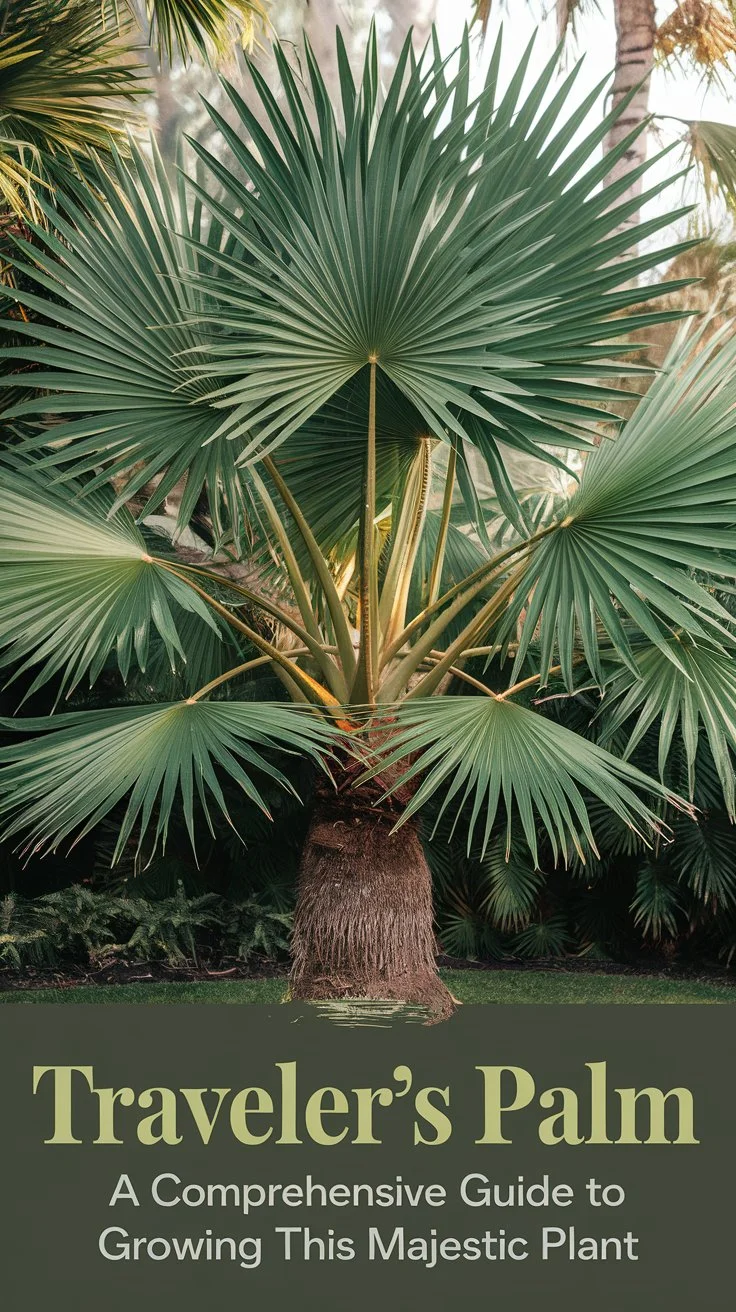Discover how to grow and care for the Traveler’s Palm, a stunning tropical plant known for its unique fan-shaped foliage. Learn essential tips on planting, maintenance and common issues from expert gardeners.
The Traveler’s Palm (Ravenala madagascariensis) is a striking tropical plant known for its fan-shaped arrangement of leaves. Despite its name, it’s not a true palm but related to bird-of-paradise plants. It thrives in warm, humid climates, requires full sun to partial shade, and well-draining soil. Regular watering and fertilization are essential for optimal growth.
Introduction to the Traveler’s Palm

As a tropical plant specialist with over two decades of experience, I’m excited to share my knowledge about the magnificent Traveler’s Palm. This unique plant can add a dramatic, tropical flair to any suitable landscape or indoor space.
Understanding the Traveler’s Palm

The Traveler’s Palm, scientifically known as Ravenala madagascariensis, is native to Madagascar. Despite its common name, it’s not a true palm but belongs to the Strelitziaceae family, along with the bird-of-paradise plants.
For more botanical information, visit the Missouri Botanical Garden’s page on Ravenala madagascariensis.
Characteristics and Growth Habits
- Height: Can grow up to 30-60 feet tall in ideal conditions
- Spread: Typically 10-20 feet wide
- Leaf Structure: Large, paddle-shaped leaves arranged in a fan pattern
- Growth Rate: Moderate to fast in optimal conditions
Growing the Traveler’s Palm
Climate and Hardiness
- USDA Hardiness Zones: 10-11
- Ideal Temperature Range: 70-100°F (21-38°C)
- Humidity: Prefers high humidity
For more information on USDA Hardiness Zones, check the USDA Plant Hardiness Zone Map.
Light Requirements
- Full sun to partial shade
- In hotter climates, some afternoon shade can be beneficial
Soil and Drainage
- Well-draining, rich soil
- pH range: 5.5-7.5
- Add organic matter to improve soil structure and nutrient content
Planting and Care
Planting Process
- Choose a location with adequate space for growth
- Dig a hole twice the width of the root ball
- Place the plant at the same depth it was in its container
- Backfill with soil and water thoroughly
Watering
- Keep soil consistently moist but not waterlogged
- Water deeply once or twice a week, depending on climate
- Reduce watering in winter
Fertilizing
- Apply a balanced, slow-release fertilizer in spring and summer
- Use a fertilizer ratio like 8-2-12 or 3-1-2
- Avoid over-fertilizing, which can lead to excessive growth
For more on tropical plant fertilization, visit the University of Florida’s IFAS Extension.
Pruning and Maintenance
- Remove dead or damaged leaves as needed
- Trim older leaves at the base to encourage new growth
- Be cautious when pruning as the leaves can be quite large and heavy
Common Issues and Solutions
Pests
- Spider mites
- Mealybugs
- Scale insects
Treatment: Use insecticidal soap or neem oil for minor infestations. For severe cases, consult a professional.
Diseases
- Root rot (due to overwatering)
- Leaf spot diseases
Prevention: Ensure proper drainage and avoid overwatering. Remove affected leaves promptly.
For more information on tropical plant diseases, check the American Phytopathological Society’s resources.
Indoor Cultivation
While challenging, Traveler’s Palms can be grown indoors in large spaces:
- Provide bright, indirect light
- Maintain high humidity (use a humidifier if necessary)
- Ensure proper drainage in the container
- Rotate the plant regularly for even growth
Landscaping Uses
- Focal point in tropical gardens
- Backdrop for smaller tropical plants
- Poolside planting for a resort-like atmosphere
- Container plant for large indoor spaces or conservatories
Conclusion
The Traveler’s Palm is a stunning addition to any tropical landscape or large indoor space. With its unique fan-shaped foliage and impressive size, it creates an instant tropical atmosphere. While it requires specific growing conditions and regular care, the reward is a truly magnificent plant that can become the centerpiece of your garden or interior space.
Remember that this plant can grow quite large, so ensure you have adequate space for its mature size. With proper care and attention to its needs, your Traveler’s Palm will thrive and provide a spectacular tropical display for years to come.
For more in-depth information on tropical plant care, visit the Royal Horticultural Society’s tropical plants guide.
For more gardening tips and plant care guides, visit usagardenhub.com.




